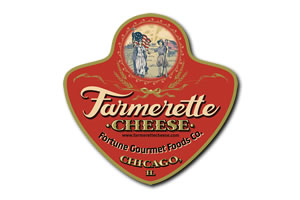
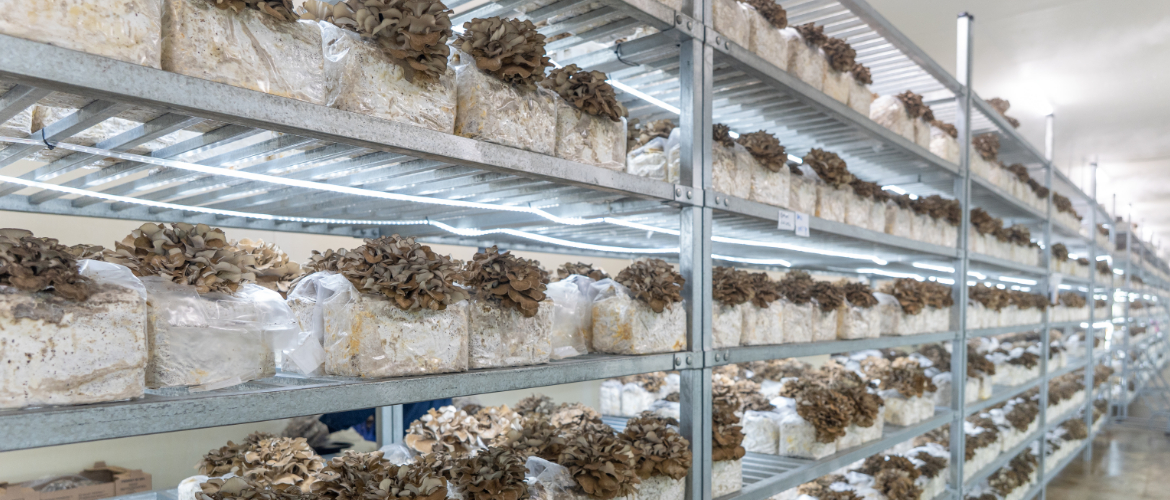
The Magic Behind Our Mushrooms
We recently visited one of our mushroom cultivators to see the entire process from spore to harvest. This farm pioneered growing exotic mushrooms back in 1977 with the first cultivated shiitake in the U.S. They have a reputation as the premier grower of top-quality, flavorful forest mushrooms that are "no longer wild, but far from tame."
Their focus is to grow specialty mushrooms with sustainable practices. The plant is in the heart of Michigan’s hardwood lumber industry, with plentiful fresh water, and access to lumber industry byproducts like sawdust, woodchips, bark, and leaf compost, needed for substrate materials. These mimic the twigs, leaves, and organic matter that make the forest floor a rich and fertile place for mushrooms to grow.
 |
The farm consists of 27 growing rooms, coolers, a packaging area, offices, a processing area, fermentation capabilities, laboratory facilities, and a soil shed. It is certified organic by Quality Assurance International, a USDA-accredited certifier. The entire operation is dedicated to recreating the wild forest conditions that nurture mushroom growth.
 |
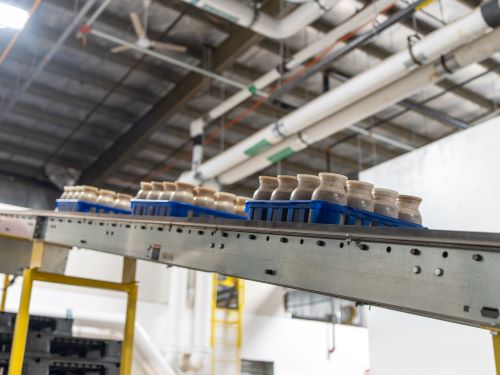 |
From Spawn to Harvest
The goal is to recreate the most productive part of the forest floor in clean, controlled conditions. The mushrooms are grown on a substrate with wood chips in reusable bottles. This is the process:
1. First, the substrate materials are blended to provide optimal nutrition for the mushrooms, and the right amount of water is added to hydrate the material.
-
2. Next, the mixed substrate is added to a container; an autoclavable polypropylene bag for maitake, and a jar for other varieties.
-
3. The containers are then sterilized in a retort; a pressurized heating vessel used in the canning industry, then cooled to room temperature.
-
4. Once cooled, the containers go to a sterile room where they are aseptically inoculated with mushroom spawn.
-
5. After inoculation, the containers are sealed and go to the appropriate species spawn room, where they incubate with controlled temperatures and humidity. For example, maitake takes about 5 weeks.
-
6. Next, the fungal cultures are induced to shift from the vegetative to the sexual stage and are placed in the species-specific growing room where they can fruit. This takes about 3 additional weeks for maitake.
-
7. Once mushrooms reach the appropriate size and characteristics, they are harvested.
-
8. After harvest, the spent substrate is recycled and turned into compost that is highly prized by local farmers and wineries.
Grown for Greatness
The farm has the capacity to grow 650,000 bottles of mushrooms. Each jar is about eight inches high, with a surface area of a little over 5 inches. If you do the math, that comes to over 300,000 square inches, or 23,000 square feet – about half an acre – of super-productive “farmland.”
Each species of mushroom needs specific conditions - perfect humidity and temperature - to thrive, so every grow room is tailored to meet those conditions. In the wild, you might have to hike dozens of acres of forest to find these little ecosystems where mushrooms find the right conditions to flourish.
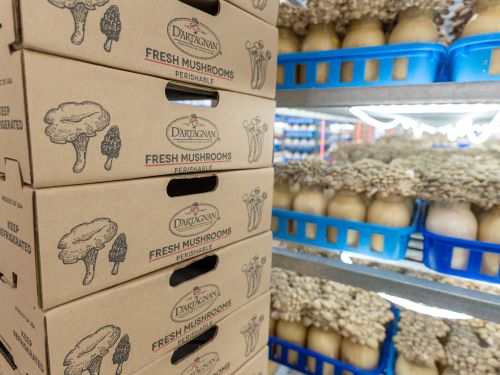 |
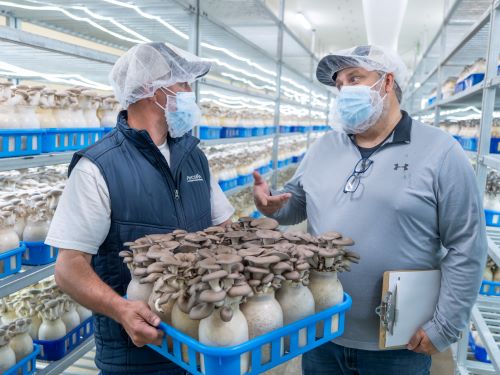 |
Our Mushroom Varieties
These are the mushroom varieties cultivated at the farm. Because they control the entire process and are always harvesting mushrooms, we have a steady supply of fresh, organic mushrooms that we deliver to chefs and retailers every day.
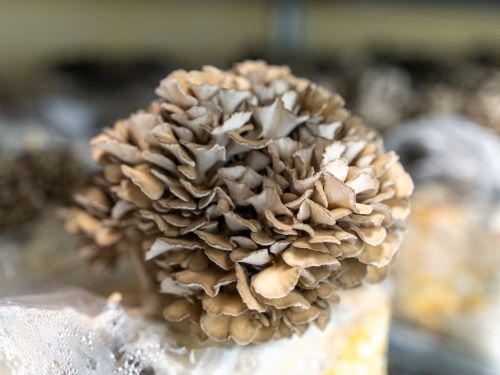 |
Maitake Maitake is also called Hen-of-the-Woods and Sheep’s Head by North American foragers, signorina by Italians, and Grifola frondosa by scientists. Long celebrated for both its culinary appeal and medicinal qualities, this mushroom has only recently been domesticated for cultivation. While they can reach a foot across in the wild, cultivated maitake has small, delicate clusters that represent the best qualities and the peak of flavor, with a light crunchy texture. |
|
Hon-Shimeji The Hon-Shimeji (Hypsizygus tessulatus), is distinguished by its nutty, buttery flavor with mild earthiness. The quarter-size caps and 2-to-3-inch cream-colored stems retain a crunchy texture even after sautéing. Versatile clamshell is a pleasant addition to seafood soups or bisques, stews, sauces, or stir-fries. Pair with red wine sauces and use in Asian influenced dishes. |
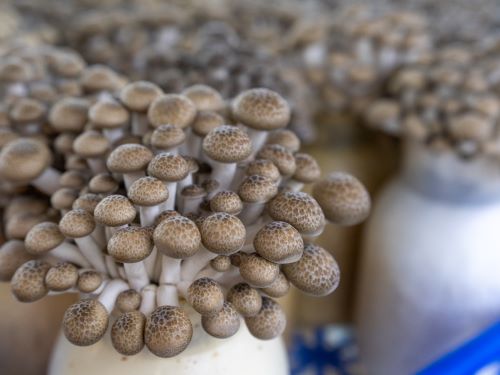 |
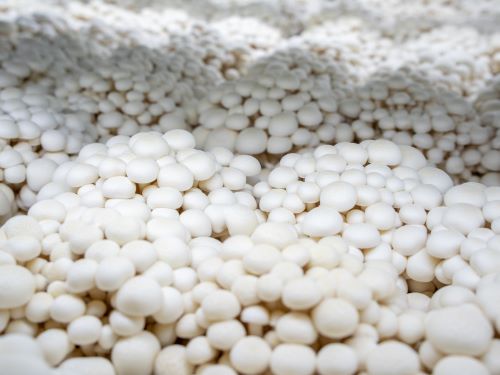 |
White Beech This is the natural albino strain of Hon-Shimeji and is named for the tree it grows on in the wild. Subtle, sweet, slightly nutty flavor, and crunchy texture. Great for ramen or ceviche or paired with seafood. Traditionally used in Asian cuisine but is versatile to match with many cooking styles. Both Hon-Shimeji varieties have a good shelf life and are attractive on the plate. |
|
King Trumpet Pleurotus eryngii, AKA King Trumpet, is the largest species in the oyster mushroom genus. It has a firm and meaty texture and a savory richness that stands up to different cooking methods. Unlike many mushrooms, the stem has the same wonderful texture and flavor as the cap, so nothing is wasted. This chef’s favorite is adaptable to any cuisine, has an amazing shelf life, and can be sautéed, grilled, braised, stewed, or broiled. |
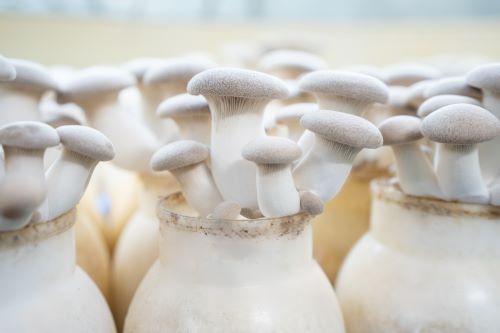 |
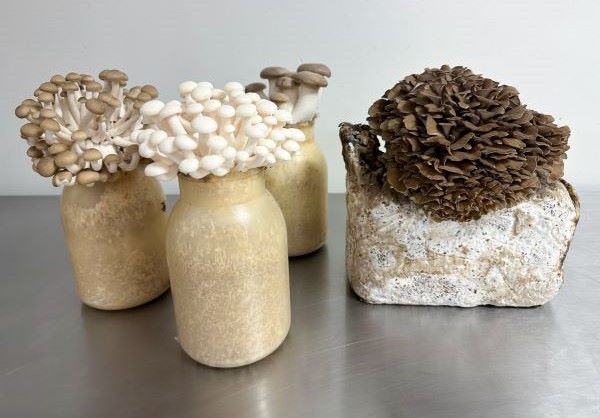 |
Chef’s Mix This 6 lb. case of Beech, Hon-shimeji, King Trumpet, and Maitake is the ultimate variety pack. Each mushroom type is individually packed in a 1.5 lb. bag to accommodate ease of use and extend shelf life. This allows the chef to cook one mushroom at a time or mix and match to create the perfect pairing. |
So Mush to Love About Shrooms
We offer a wide variety of mushrooms—foraged in the wild, exotic, and cultivated—along with truffles in season. Learn more about our mushroom program and give us a call to add them to your menu.
.jpg) |
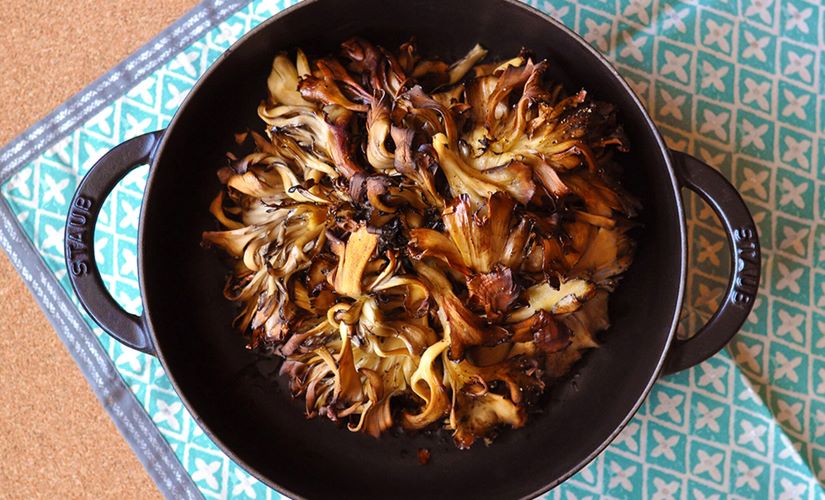 |



